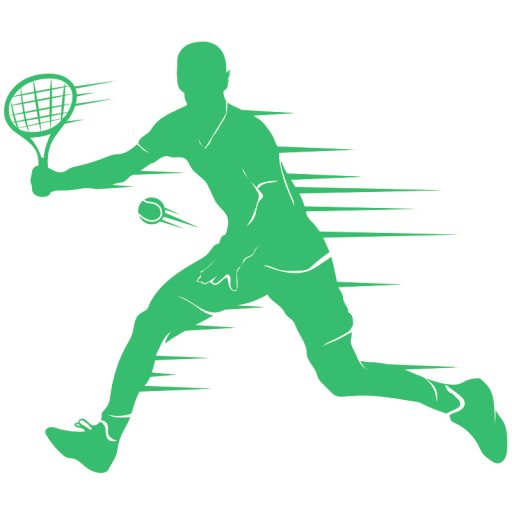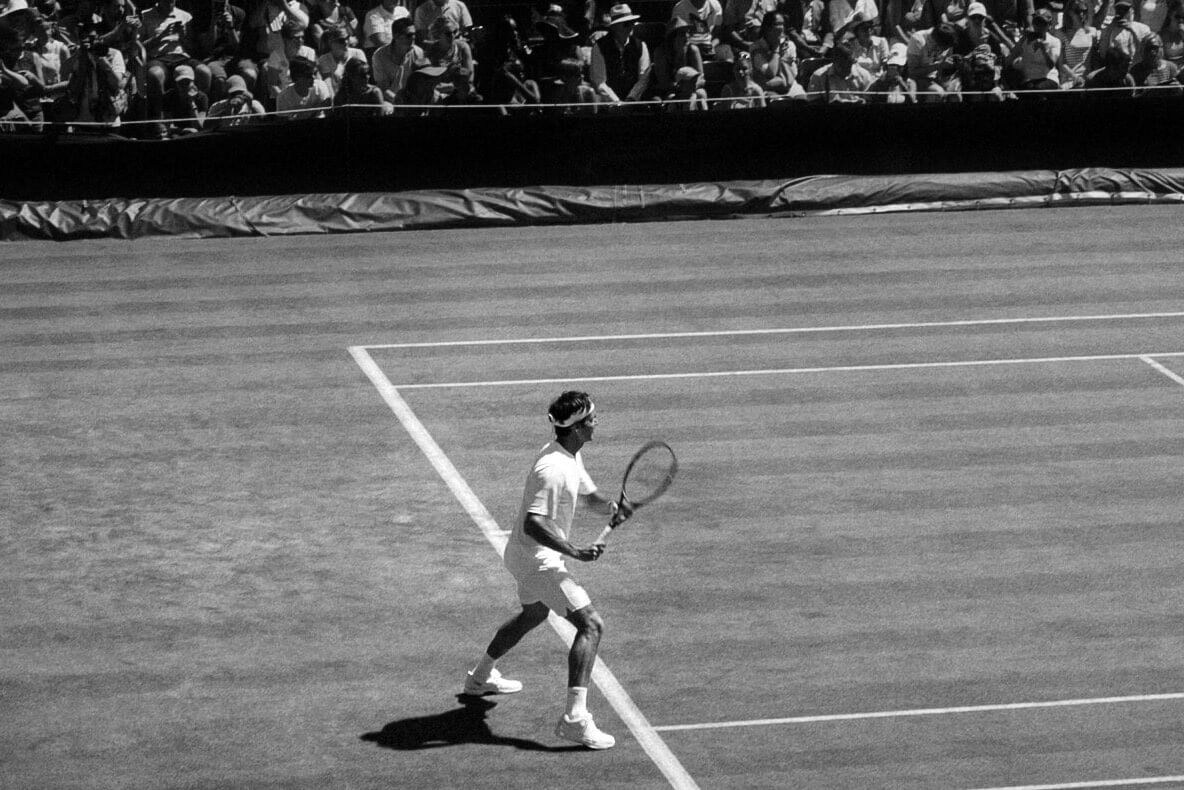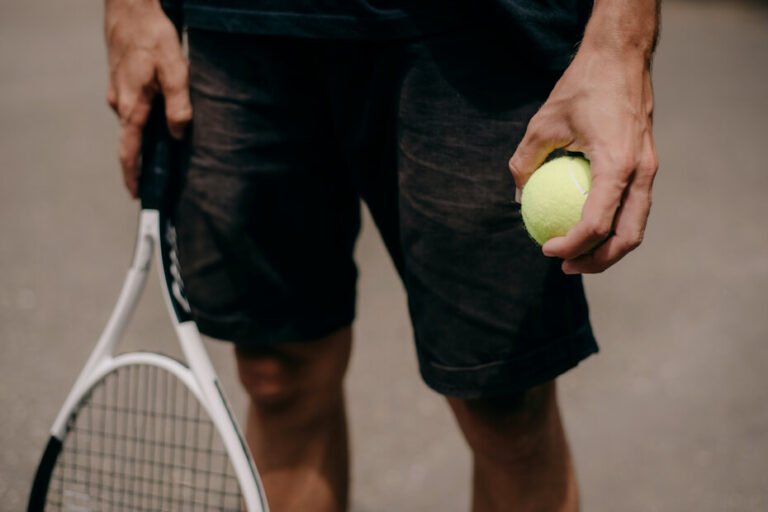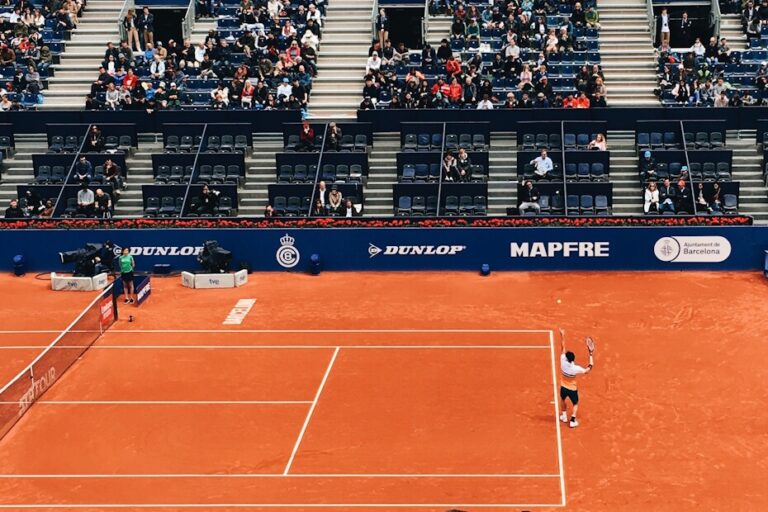If you were asked to name a popular sport, what would be the first name that popped into your head? For many people, the first name that sprang to mind would be tennis.
When we think of tennis, we think of hot summer days (or damp and grey summer days if it’s Wimbledon), strawberries and cream, and some of the greatest athletes to ever grace the game.
Tennis is a sport enjoyed all over the world, and rightly so. It is very diverse, it’s highly competitive, it’s more addictive than caffeine and chocolate combined, and it makes for compelling viewing. Even if you’re not a hardcore tennis fan, chances are you’ll have found yourself caught up in some of the more high-profile tennis matchups held over the years.
Tennis unites people and brings them together with a common passion, it’s great to watch, and even more fun to play, but where did this amazing sport originate, and is the version of tennis that we all know and love today, the same as it was when it was first invented? Well, that’s what we’re going to find out today. Here’s a look at the origins and the history of tennis.
What Exactly is Tennis?
Yes, yes, we’ll get to the origins and history of tennis in just a few moments, but first, we need to ensure that you all know exactly what tennis is.
Tennis is a hugely popular racquet sport which can either be played individually in singles or with a partner in the form of doubles.
Each player strikes a specially designed hollow rubber tennis ball over a net into their opponent’s court with a strung tennis racquet. The basic goal is to strike the ball into your opponent’s court, with them failing to return it over the net and back to you. Now, obviously, the rules of tennis are considerably more complex than that, but you get the basic idea of what this immensely popular sport really is.
The great thing about tennis is that it is so inclusive as anybody can play, regardless of their age, gender, shape, size, background, or athletic ability.
Where Did Tennis Originate?
Now, this is where things get a little tricky because, like a lot of things in life, the origins of tennis are not fully known.
Historians and boffins alike, generally believe that very primitive versions of the sport we now know as tennis, can be traced way back, thousands of years, to the ancient Egyptians, Romans, and the Greeks.
There is evidence to suggest that they would play some form of a game that served as a precursor for tennis. One could argue, however, that this game, which they played with their bare hands, could serve as a precursor for countless other racquet sports such as badminton and squash, as well as games such as handball and volleyball.
So, while it is likely that the ancient Romans, Greeks, and Egyptians did play a type of game which is very loosely based on tennis, to say that tennis originated in these parts of the world would be a bit of an insult to you, our lovely readers, and we certainly wouldn’t want to do that.
What we do know, however, and this is something which historians all agree on, is the fact that the origins of tennis can be traced back to Europe, in France of all places.
A Game of Palms?
Okay, so we know that the origins of tennis can be traced back to France, but how did it come about, and when?
The exact date of inception for the invention of tennis is not clear, but historians are generally in agreement that tennis almost certainly was invented in France, around the 11th or 12th centuries.
It is most likely that the basic form of tennis originated in French monasteries, and was invented by French monks.
As hard as monks worked doing God’s work, they too deserved and enjoyed some downtime, but way back in the 11th/12th centuries, there weren’t crosswords to do, puzzles to fill in, or TVs to watch (Yes, monks do watch TV too). To pass the time, and also to get some much-needed exercise, it is believed that the monks would play a primitive courtyard ball game whereby they would strike a “ball” either against the walls of the courtyards or over a rope with their hands.
The game was closely based on a popular game called ‘Paume’ which meant ‘palm’ as that is the part of your body that you would use to strike the ball. As the months passed by, however, the monks got more and more into their ‘Paume’ game, the rules changed slightly, and the game soon was known as ‘Jeu de Paume’ which meant ‘Game of the Palm’.
As far as the name goes, it is believed that the monks would yell ‘Tenez’ before palming the ball at their opponents. This meant ‘To Take’ in French, or perhaps ‘Take That’.
A Game Fit for Kings
As the centuries passed by, Jeu de Paume grew in popularity and more and more people started playing it, and not just those living in monasteries either.
As the game grew in popularity, it was tweaked and altered to improve the playing experience. For instance, a leather glove was worn to strike the ball. Eventually, this glove was replaced with a handle with webbing attached for serving the ball. This would technically be the first iteration of a tennis racquet, though officially, the first tennis racquet wouldn’t be available for other several centuries.
Anyways, we digress, so back to the task at hand. The game known as Jeu de Paume had now spread way beyond the walls of monasteries, and people up and down France were playing it at home, and even in public places.
Eventually, noblemen in France got wind of this exciting new game sweeping the nation, and they just knew that they had to get in on the action, and they did. In fact, it wasn’t just France, as the game swept across Europe.
Soon, the game which would later go on to be known as ‘Tennis’ became a status symbol, since rich and powerful aristocrats were playing it. Now, playing the game was seen as trendy and cultured.
As more people played the game, courtyards that had previously been used to play were adapted and modified into indoor courts. It is believed that, by the 13th century, there were as many as 1,800 courts in France.
Interestingly, it wasn’t every man either with noble blood in his veins or with power and status, that would enjoy the game as both the Pope and Louis IV, actually tried to get it banned because it was serving as a distraction for the general public. It turns out, however, that not even two huge buzzkills like those two could derail the popularity of the sport, especially when it proved popular with the English monarchy.
Both Henry VII and Henry VIII were said to be avid tennis players, so much so in fact, that they commissioned the construction of numerous courts up and down Britain. A very popular attraction in Hampton Court Palace to this day is the original tennis court, which was built way back in 1625.
The history books depict King Henry VIII as an overweight, lazy, oafish adulterer, and while in his later years he may have put on the pounds and let himself fall out of shape, in his younger days he was a strapping young lad in great shape, that was also very sporty and athletic. He was reportedly a very gifted tennis player.
Now, before we go any further, we need to make it clear that the game that was played back then, was still very different from the version of tennis that we all know and adore to this day. The version of tennis that we know of had its origins in the invention of lawn tennis, which we’ll be learning about later. This version of tennis was played exclusively indoors, in narrow, walled courts, with the ball being played off of the walls, similar to squash. Here, players scored points by hitting the ball into netted windows beneath roofed galleries in the court. The net used was 5 feet high on either end and 3 feet high in the center, creating a very distinct droop.
Here, a wooden-framed racquet strung with sheep gut was commonly used (yuck), along with a ball with a cork core weighing around 3 ounces.
For years upon years noblemen and women, and peasants alike, enjoyed the game across Europe, though by the 1700s, like a one-hit-wonder musician who hadn’t had a smash hit in years, its popularity was fading…
The Invention of Lawn Tennis
Between 1700 and 1850, the earliest incarnation of tennis had all but faded into obscurity, as it had very much fallen out of fashion and was no longer seen as a status symbol, or indeed, a way of having fun.
All of this changed in the mid-1800s however, thanks to Charles Goodyear of all people, who invented vulcanized rubber. Thanks to the invention of this new type of rubber, balls used for playing tennis were now made differently. Whereas in the past they had been made of cork and weighed roughly 3-ounces, the new balls were much lighter, were made of rubber, and were much bouncier.
Before, tennis was played indoors, but now, thanks to the new rubber balls, tennis could be played outdoors on the grass. Suddenly, the sport of tennis was back in the public’s eye.
It wasn’t until 1874 however, that things really took off for the sport. A London man named Major Walter C. Wingfield saw the potential in the basic form of tennis, and the new rubber balls, and he actually patented the rules and all of the kit for a sport which he called ‘Sphairistike’ which was the Greek word for ‘Playing at Ball’.
Wingfield scratched his head and rattled his brain coming up with a new and innovative game based loosely on the game enjoyed across Europe, centuries earlier, called Jeu de Paume. He came up with an hourglass-shaped grass-court playing surface, which was a great deal shorter than the courts which are used today.
Now, don’t get us wrong, the rules were complex and very different from modern tennis rules now, but the foundations for modern tennis were laid. A year later, the kit and equipment for playing this version of tennis were sold all over the world, in places such as the US, China, and India. In the UK, because croquet had been so popular, there was an abundance of smooth outdoor courts available that could easily be tweaked to play Wingfield’s version of tennis.
Sticking with the croquet theme, the world’s first Wimbledon Tournament was actually held back in 1877, by none other than the All England Croquet Club.
Now, the potential was there, but it still needed some work. The first thing that the organizing committee would do is get rid of Wingfield’s hourglass-shaped court and instead go with an even rectangular-shaped court.
Wingfield’s rules were also altered, or ditched entirely and changed to the rules which are virtually identical to the rules used to govern the game to this very day. The first Wimbledon tournament was held as a charity event to help raise funds to repair a broken roller at the club. It proved to be so successful, however, that the club would soon change its name to become the All England Croquet and Lawn Tennis Club. Lawn Tennis was now officially born.
Lawn Tennis in the US
Lawn tennis may have been developed in the UK, but that didn’t mean that it wouldn’t serve (pardon the pun) as a popular game in other parts of the world too. As you know, the Americans are pretty big fans of tennis, and they have provided the game with some of the greatest players in the history of the sport, Venus and Serena Williams, John McEnroe, and Pete Sampras to name but a few, and so lawn tennis proved a grand slam in North America too.
After the world’s first Wimbledon tournament held in 1877, the world stood up and took notice of this popular “new” sport. It proved especially big in America and on the 21st of May, 1881, the US National Lawn Tennis Association (now known as the United States Tennis Association) was created to organize similar competitions to Wimbledon, and to regulate the rules.
The tournament we now know as the US Open was held for the first time in 1881, though it was initially known as the U.S Men’s National Singles Championship. The tournament was held in Newport, Rhode Island, and just like the first Wimbledon tournament a few years prior, this event too proved to be a whole lot of fun to watch and insanely popular.
At that point in time, it was very much the men who were grabbing all of the attention in terms of sporting success, but that changed in 1887 as the U.S National Women’s Singles Championships were held. Now, women were empowered as they were shown to be just as athletically capable and gifted as men, plus the female tennis players could put butts in seats as the women’s tournament proved just as popular as the men’s.
By now, tennis was worldwide and other countries, loving the tournament style of tennis that the UK and the US had arranged, started holding their own tournaments. In particular, France would host their first one in 1891, and Australia would host theirs in 1905. These, along with the tournaments held in the UK and the US, would become, and remain to this day, to be the most prestigious tennis tournaments in history, in the form of:
- Wimbledon
- US Open
- French Open
- Australian Open
Quick Facts About Tennis’ Scoring System
Before we leave you to go dust off your tennis racquet and head to your nearest tennis court for a game or two, you may be wondering why tennis’ scoring system is so unique.
Unlike some sports, which keep their scoring systems basic, I.E one goal = one point, two goals = two points, and so on, the tennis scoring system is very different. Score one point, and that’s 15, two is 30, and three isn’t 45 at all, but rather, 40. Confused? You won’t be for much longer.
Historians believe that tennis’ scoring system can be traced back to medieval France, with a clockface used to indicate the scores. For every point that a player scored, the clock face would be moved to the nearest quarter (15, 30, 45). The first tennis player able to reach 60 would be declared the winner.
Sounds simple, right? Well, it would be, except tennis’ scoring system is 15, 30, and then 40. One possible reason for this is that it is believed that players needed to win by 2 points, in which case the hands would move to 40, then to 50, and if they got to 60, they would win.
So there you have it. The origins, history, and some very important historical facts about the beautiful game of tennis.







